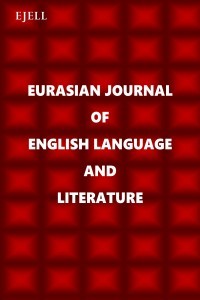Inanimate Witness of History
Inanimate Witness of History
John Keats, Ode Romanticism, Urn,
___
- 1. Bernbaum, E. (1949). Guide through the Romantic Movement. Cambridge: Cambridge UP.
- 2. Bowra, C. M. (1966). The Romantic Imagination. London: Oxford UP.
- 3. Brooks, C.(1947). The Well Wrought Urn. New York: Harcourt, Brace & Co.
- 4. Bush, D. (1966). John Keats: His Life and Writings. London: The Macmillan Company
- 5. Ferber, M.(2010) Romanticism: A Very Short Introduction. New York: Oxford UP.
- 6. Keats, J. (1986) The Complete Poems. Ed. John Bernard. Harmondworth: Penguin.
- 7. Krober, K.(1993). Romantic Poetry: Recent Revisionary Criticism. New Jersey: Rutgers University Press.
- 8. Westland, P. (1950). The Teach Yourself History of English Literature: The Romantic Revival 1780-1830. Ed. Leonard Cutts. London: English UP.
- Yayın Aralığı: Yılda 2 Sayı
- Başlangıç: 2019
- Yayıncı: Karabük Üniversitesi
ISLAMIC CIVILIZATION’S CONTRIBUTION TO THE WORLD AND THE EUROPEAN RENAISSANCE
Double Consciousness in August Wilson’s Fences
Sanaa AL GHAREEB, Israa JAWAD, Mohammed HASSOUNA
Reproducing Feminist Writing: Contemporary Feminst Life-Writing
Staging Violence and its Impact in Wertenbaker’s Our Country’s Good
Space and Architecture in David Greig's The Architect
Ali GÜNEŞ, Selçuk ŞENTÜRK, Zeynep ŞENTÜRK
WINTERSON’S FRANKISSSTEIN: POSTMODERNISM BLENDED WITH A 19th-CENTURY STYLE PHILOSOPHICAL LOOK
